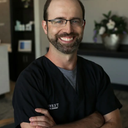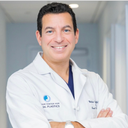Hello and thank you for your very informed question. First off, it is obvious that you have done your research and are asking good questions. I commend you for that. One of the beautiful things about plastic surgery is that it is a constantly evolving field, and rhinoplasty is not an exception. Research and clinical studies (with at least 10 years of follow up) in cartilage grafting with fascia, has shown it to be a safe, reliable, and predictable method of dorsal augmentation in rhinoplasty. Cartilage can be diced, placed in strips, or can be placed in different ways, based on the experience of the plastic surgeon in combination with fascia for dorsal augmentation. Because there are so many different methods to augment the nose, whether its using your own cartilage, cadaver cartilage, or different types of fascia, no one method is universally better because it depends on so many factors such as the patient's cartilage quality, the complexity of the nose anatomy, any history of trauma or nasal surgery the patient may have had, and the postoperative care the patient takes. Moreover, since different surgeons have different preferences, the results inevitably depend on the surgeon who is performing your rhinoplasty. In my hands, diced cartilage with temporalis fascia can be precisely placed in the dorsum of your nose for augmentation with no significant risk of malposition.



